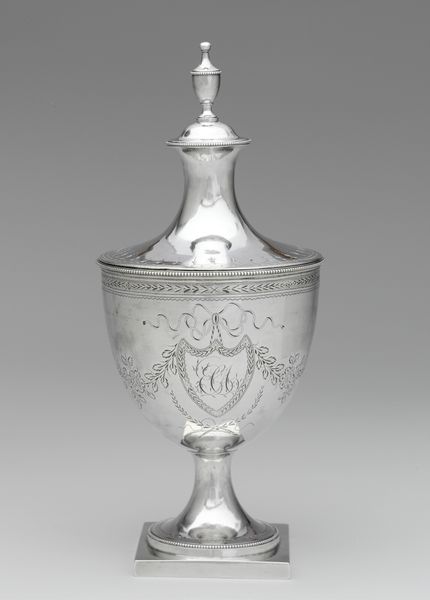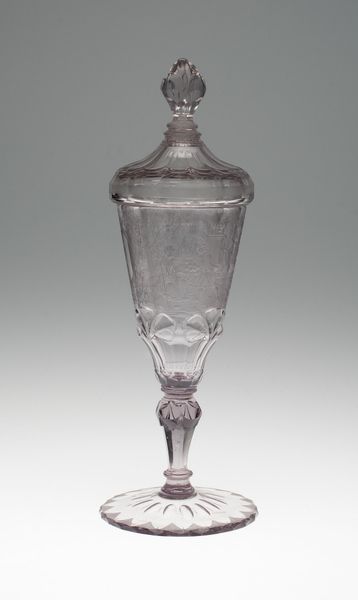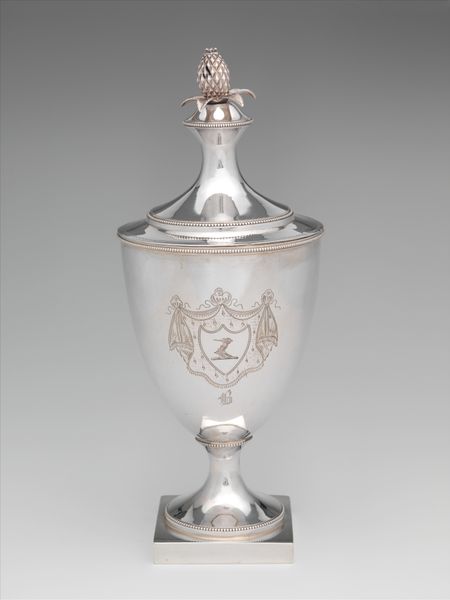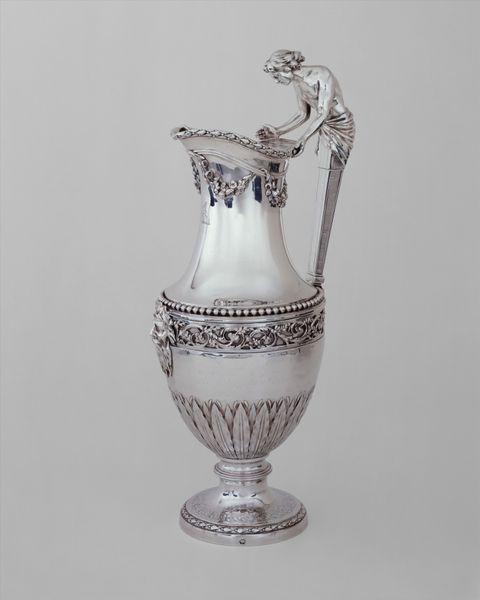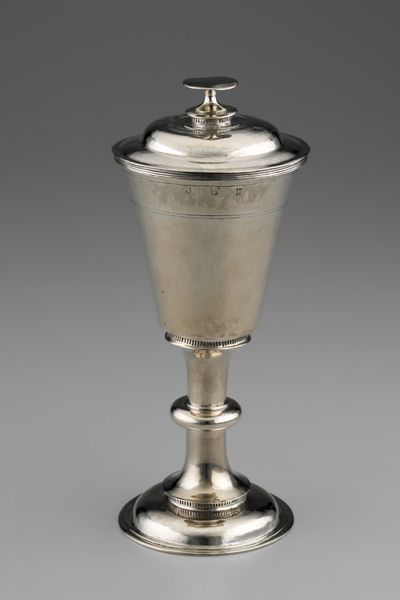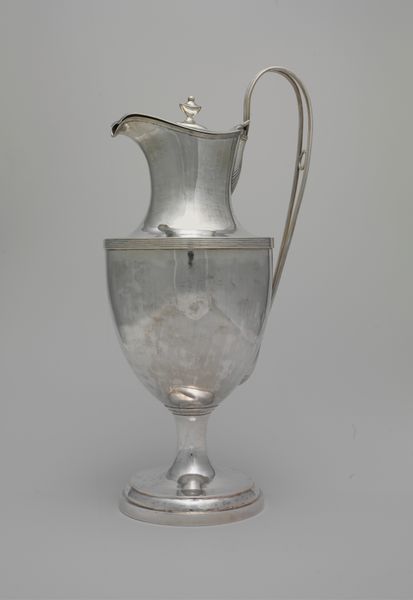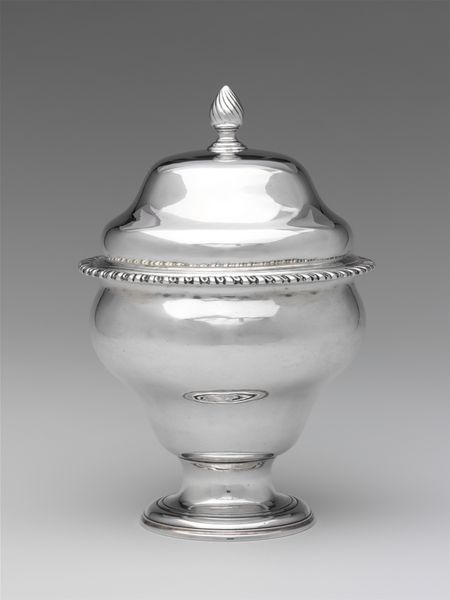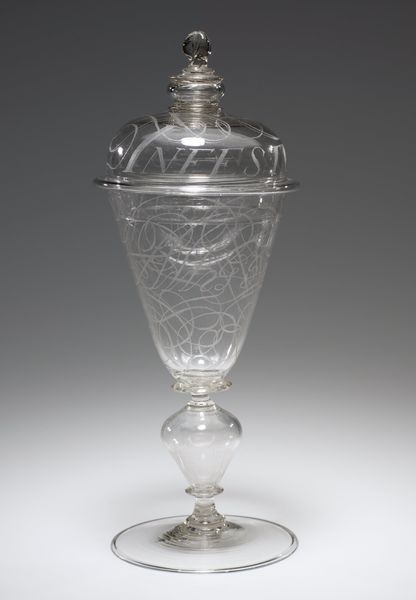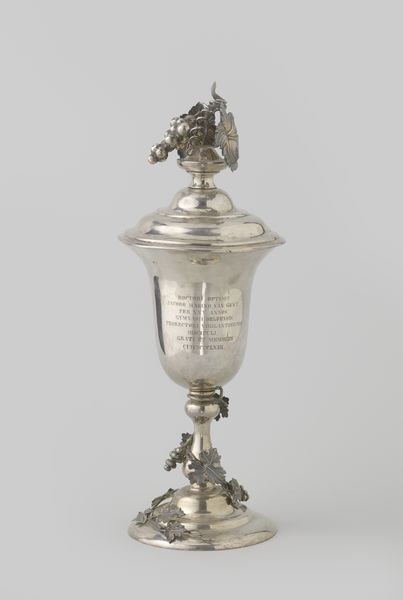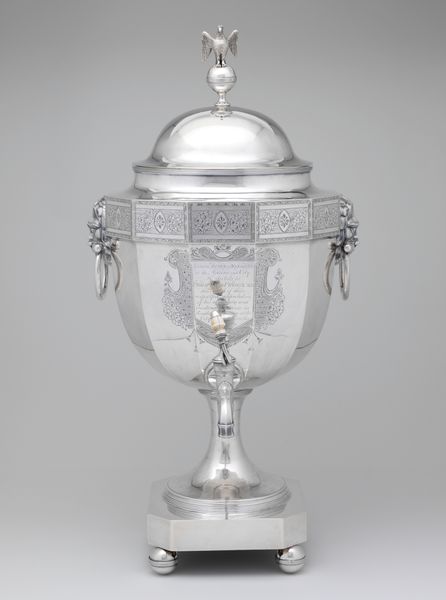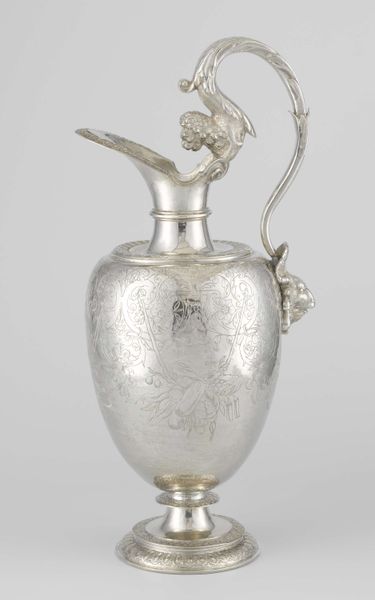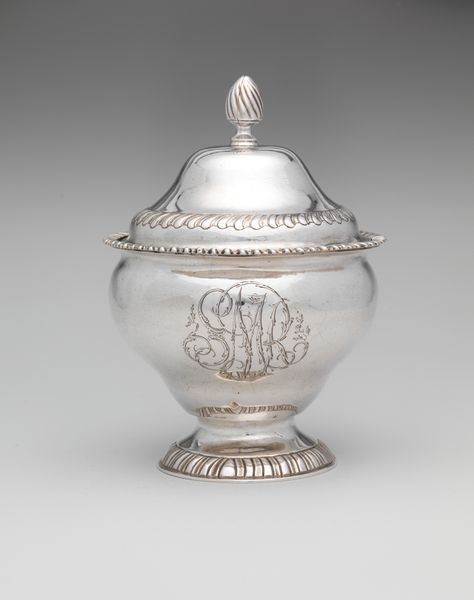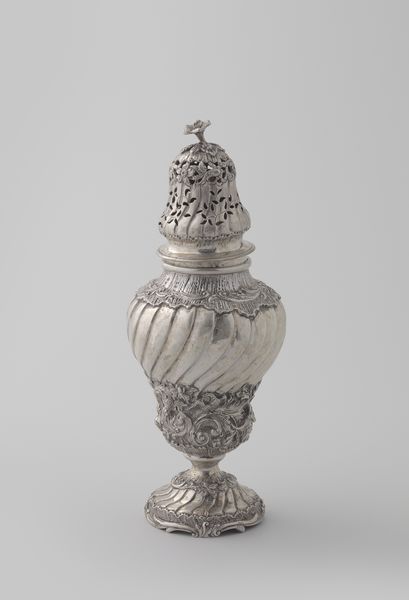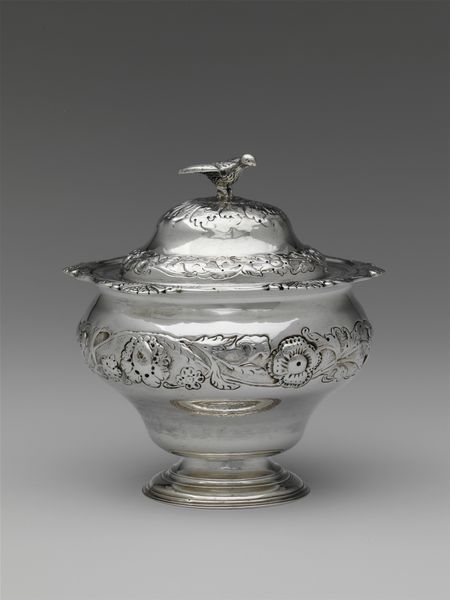
silver, metal
#
neoclacissism
#
silver
#
metal
#
united-states
#
decorative-art
Dimensions: Overall: 9 1/4 in. (23.5 cm); 12 oz. 16 dwt. (397.8 g) Lip: Diam. 4 1/4 in. (10.8 cm) Foot: Diam. 2 7/8 in. (7.3 cm) Body: H. 6 in. (15.2 cm); 9 oz. 7 dwt. (291.2 g) Cover: 3 7/16 x 4 1/8 in. (8.7 x 10.5 cm); 3 oz. 9 dwt. (106.6 g)
Copyright: Public Domain
This sugar urn was made by Charles Faris, a silversmith active in Philadelphia in the late 1700s, fashioned from almost 400 grams of silver. Consider the silversmith's craft here, a painstaking process of heating, hammering, and shaping the metal. Look closely, and you'll see the delicate engraving. The urn's elegant form speaks to a refined taste, but also to the labor-intensive processes required to bring such an object into being. Silversmiths like Faris were highly skilled artisans, and their workshops were sites of intense activity. The production of such luxury items was directly tied to wider social issues of labor and consumption. The sugar itself, of course, was also the product of labor – often enslaved labor in the Caribbean. So this object, beautiful in its own right, is also a potent reminder of the complex economic and social systems that underpinned its creation. Appreciating the materiality and making of this urn allows us to reflect on these broader historical contexts, blurring the lines between art, craft, and social history.
Comments
No comments
Be the first to comment and join the conversation on the ultimate creative platform.
